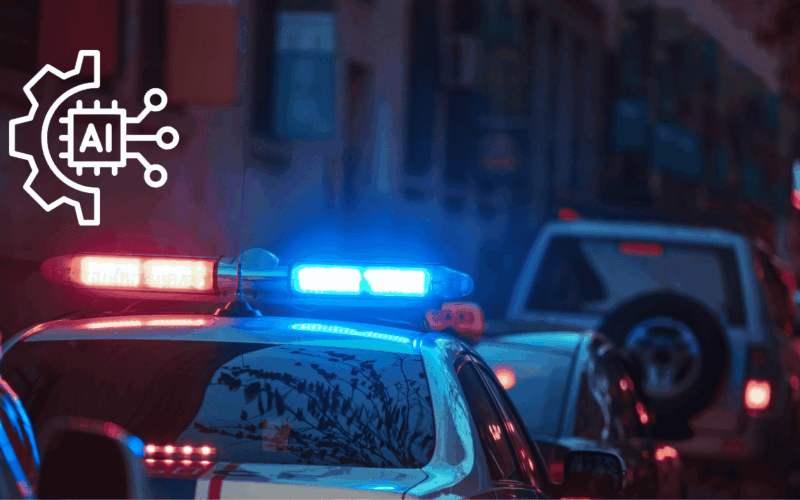The integration of artificial intelligence into policing is one of the most consequential developments in modern law enforcement. While AI promises enhanced crime-solving capabilities, predictive analytics, and streamlined operations, it also presents deep ethical concerns about privacy, surveillance, and bias. As AI’s role in policing grows, so does the public’s concern about how far is too far. In this article, we’ll explore the use of artificial intelligence (AI) for the police: the rhetorical battle for the future of law enforcement: Ethical Battle.
This guide explores the ethical debate surrounding AI in law enforcement, the technological advancements shaping the future, and the balance between safety and civil liberties.
The Rise of AI in Modern Policing
Law enforcement agencies worldwide are increasingly adopting AI-driven tools to assist with investigations, surveillance, and crime prevention.
Key AI applications in law enforcement:
- Predictive policing: Identifying crime hotspots based on historical data
- Facial recognition: Matching faces in surveillance footage to databases
- License plate recognition (LPR): Tracking vehicles in real time
- Gunshot detection systems: Automated alerts for gunfire incidents
- Natural language processing: Monitoring social media for threats
- Video analytics: Reviewing hours of bodycam and CCTV footage
These technologies aim to increase efficiency, improve response times, and allocate resources more effectively.
The Ethical Dilemmas: Where AI Meets Justice
1. Police AI: Algorithmic Bias and Discrimination
AI systems often inherit biases from historical policing data. This can lead to disproportionate targeting of marginalized communities.
Examples of bias:
- Facial recognition misidentifies individuals of color at higher rates.
- Predictive policing may over-police certain neighborhoods based on flawed datasets.
Solutions:
- Regular audits for bias
- Diverse datasets in model training
- Independent oversight committees
2. Privacy and Surveillance Concerns Police AI
AI-powered surveillance raises significant privacy issues.
Risks:
- Constant monitoring of public spaces without consent
- Data collected on individuals not suspected of crimes
- Government misuse of personal data
Safeguards:
- Clear limits on data collection and retention
- Transparency reports from law enforcement agencies
- Warrant requirements for certain types of surveillance
3. Police AI Accountability and Transparency
AI systems often operate as “black boxes,” making it difficult to understand how decisions are made.
Key concerns:
- Who is responsible when AI makes an error?
- Difficulty challenging AI-derived evidence in court
- Lack of transparency from tech vendors supplying AI tools
Remedies:
- Mandated algorithm explainability
- Public disclosure of AI usage policies
- Open-source AI frameworks for law enforcement
4. The Chilling Effect on Society
Widespread AI surveillance can deter lawful behavior, such as peaceful protests or free speech.
Ethical Battle Police AI Consequences:
- Reduced public trust in law enforcement
- Increased fear of government overreach
- Self-censorship in both public spaces and online platforms
Police AI: Community protections:
- Public input before deploying surveillance AI
- Citizen oversight boards
- Regular privacy impact assessments
Balancing Innovation with Rights: Global Approaches
| Country | AI Usage in Policing | Regulation Status | Public Sentiment |
|---|---|---|---|
| United States | Facial recognition, predictive AI | Local bans in some cities | Mixed, growing resistance in cities |
| United Kingdom | CCTV, facial recognition | Moderate, under review | Privacy groups raising concerns |
| China | Extensive surveillance systems | Minimal restrictions | Normalized acceptance, limited dissent |
| Germany | Predictive policing pilots | Strict GDPR-based constraints | Cautious, privacy-focused |
| Australia | License plate recognition, CCTV | Growing regulation discussions | Mixed, debates on privacy intensify |
| Canada | Facial recognition, AI analytics | Some restrictions on use | Strong public demand for transparency |
Technology Providers Powering AI Policing
- Clearview AI: Police AI: Facial recognition scraping publicly available images
- ShotSpotter: Detects gunfire and notifies law enforcement
- PredPol: Predictive policing based on crime patterns
- Axon AI: Analyzes video from bodycams
- Palantir: Data analysis for investigations
These providers often face scrutiny over their privacy policies, bias, and lack of transparency.
Core Ethical Principles for AI in Law Enforcement
- Transparency: Full disclosure on how AI is used, including public reporting.
- Accountability: Clear responsibility for AI-driven errors.
- Bias Mitigation: Ongoing audits to identify and correct algorithmic bias.
- Privacy Protection: Limiting surveillance scope, encrypting data, and defining retention periods.
- Human Oversight: AI should assist, not replace, human decision-making.
- Informed Consent: Community involvement before adopting new technologies.
- Proportionality: Use AI only when the benefits outweigh risks to civil liberties.
What Citizens and Policymakers Should Demand
- Public consultation before adopting AI surveillance tools
- Mandatory audits of AI systems for bias and fairness
- Strong data protection laws governing AI usage
- Independent oversight bodies with enforcement power
- Easy processes to challenge AI-related decisions
The Road Ahead: Collaboration or Conflict?
Best-case scenario:
- Law enforcement works closely with civil liberties groups, ethicists, and technologists to create fair, transparent AI tools.
- AI enhances community safety without compromising rights.
Worst-case scenario:
- Widespread public backlash against unchecked surveillance leads to lawsuits, distrust, and technological bans.
- AI perpetuates bias and inequality, eroding public trust in law enforcement.
Ethical Battle Police AI Final Thoughts
The intersection of police and AI represents one of the most significant ethical crossroads of our time. While the promise of AI includes faster crime-solving, safer communities, and more efficient law enforcement, the risks of surveillance overreach, bias, and erosion of civil liberties are real and growing.
The future of AI in policing depends on finding the right balance—leveraging technology for public safety while upholding the rights, privacy, and dignity of all citizens. Transparency, accountability, and public engagement must guide this journey. Otherwise, the tools designed to protect society risk becoming tools that undermine it.








